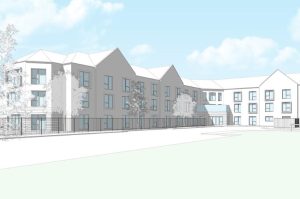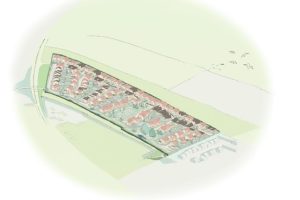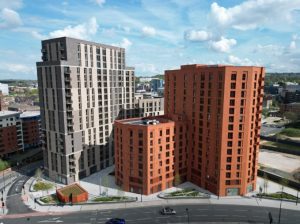Opportunities available as commercial property market recovers

YORKSHIRE’S office market is facing a dearth of available space as fewer new schemes near completion as a result of the “rollercoaster recession”, an audience of senior business figures was told today.
Speaking at a CB Richard Ellis client seminar this morning, Peter Damesick, head of UK research at the company, said there would be as little as 500,000 sq ft of new office space coming onto the market in total in seven major UK cities, including Leeds, in the near future.
Director of valuation in Leeds, Michael Porter, told the audience at the event at The Queens Hotel in Leeds, said: “Within the offices sector it is acknowledged that demand has been erratic over the last two years and a lack of speculative development has resulted in limited grade A Leeds city centre space.
“Whilst rental levels have fallen back during the last two years it is unlikely that any further speculative office development will take place.”
Dr Damesick told the 70-strong audience that commercial property values had seen a strong but selective recovery since mid-2009, after severe falls over the previous two years.
He said the economy was moving from a “private sector to public sector recession”, and that this would provide both opportunities and problems for the Yorkshire property market.
However, Dr Damesick, who said that CBRE expects economic growth of between 3% and 5% in the office, retail and industrial property markets over the short to medium-term, said: “We seem to have avoided things getting unsustainable (in the property sector). The medium term prospects for property returns are actually quite attractive.
“The coming year will bring risks but also opportunities.”
Dr Damesick said the Emergency Budget on June 22 and the government’s forthcoming Public Spending Review would give a clearer indication of the future of the public sector on the property market in Yorkshire, but there would be opportunities arising from civil service relocations and government office occupancy.
“The coming fiscal squeeze to reduce the public sector deficit will impact on growth in those regions with high dependence on public spending. Public capital spending will be under severe pressure in the next few years,” he said.
“On the positive side for property, there is a fair chance that interest rates will remain low for some time, helping to offset the fiscal contraction.
On the overall property market, he said: “The upturn has been greatest for prime quality property with secure income on long leases. By sector, the strongest capital growth has occurred in the Central London office market and in retail warehouses.
“Regional offices and industrial markets have lagged, as has secondary property across the board. A widening gap in yields has opened up between the prime and secondary property.
“The rise in values has slowed in the last few months and prime yields in several sectors look to be stabilising for the present.
“Average property yields still look highly attractive against government bonds or cash, but the market faces a major re-financing requirement from the large volume of property debt which is due to mature in the next few years.
“Outside Central London, occupier market conditions remain challenging and the short term rental growth outlook is subdued.
“Development has been sharply curtailed by restricted access to finance and a squeeze on new supply is now on the horizon.
“Property values may struggle to gain further momentum in the short term, but from current yield levels and with gradually improving occupier market fundamentals, the medium term outlook for property investment returns looks relatively positive. The next 12 months offer opportunities as well as risks.”
Robin Bullas, associate director of capital markets at CBRE Leeds, told the audience that the last 12 months had seen a dramatic change in investor behaviour.
Mr Bullas said: “Demand is still focused on prime strong covenants and well configured buildings and we are also seeing debt backed buyers still at a disadvantage compared to cash rich individuals, property companies and institutions who are now re-emerging.
“As of June 2010, we are beginning to see the institutional funds slow down in their acquiring appetite due to them consolidating their existing portfolios and also focusing on off market investments. They are not as cash rich as they were six months ago.
“The general view is that the slow-down of the investment market has begun due to the election and new Government and the envisaged over pricing of certain assets and the increase in risk and slowdown in the availability of cash.
“The future of the next three months will be fairly slow in terms of investment activity which is normally the case over the summer months and we predict that the last quarter of 2010 will be a return to stronger interest in investment across all sectors for correctly priced investments.”
Porter, told the audience that reduced development activity in Leeds and the subsequent anticipated lack of supply going forwards was likely to stimulate future rental growth in the medium to longer term.
Mr Porter said he was confident major retail-led schemes such as Trinity Quarter and Eastgate Quarter in Leeds would progress.








